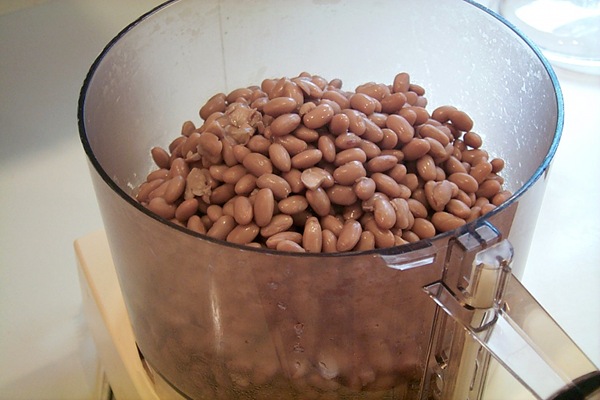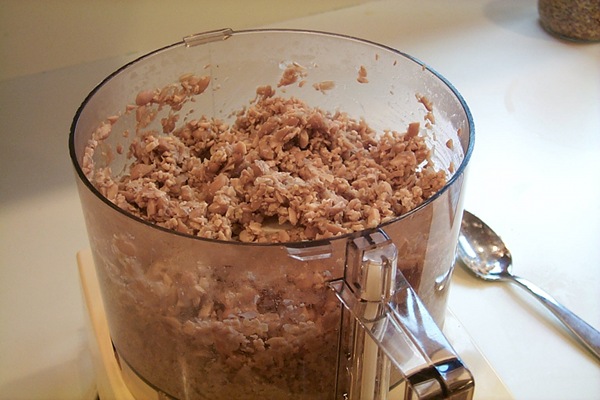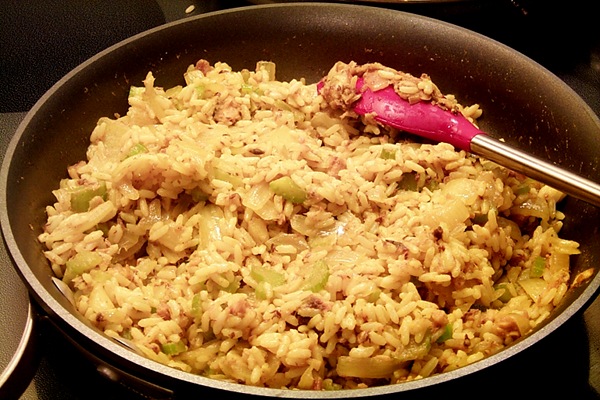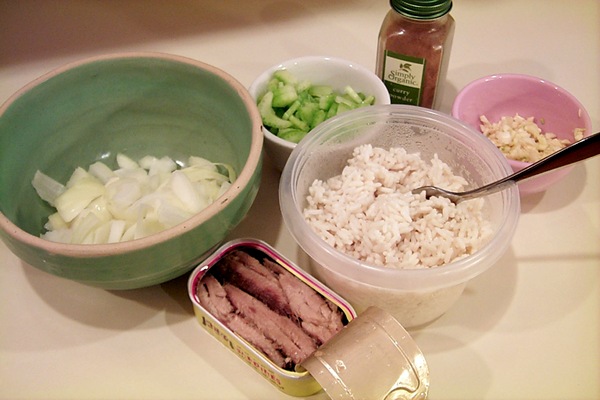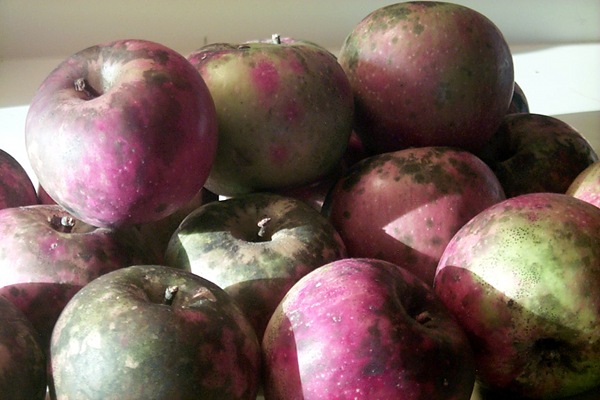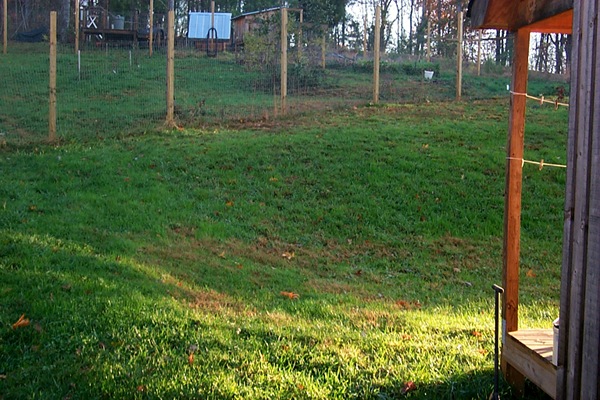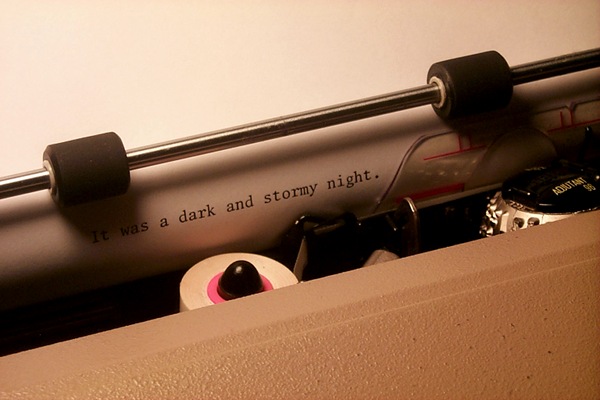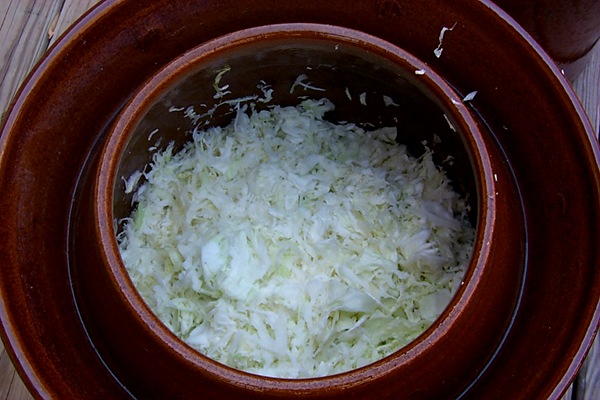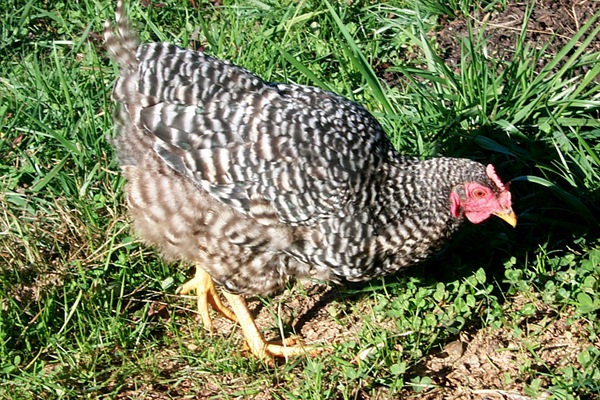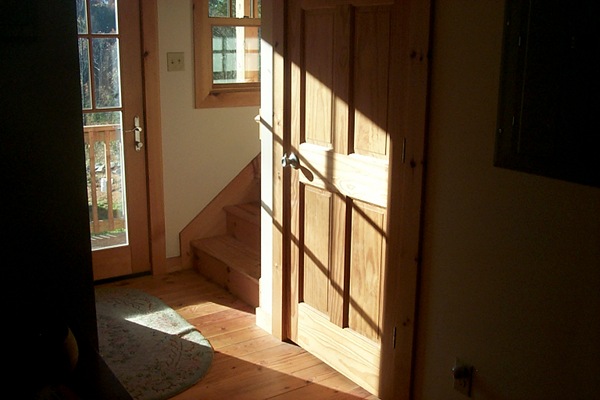
The front door and hallway around 8:30 a.m.
Building a house will make you crazy. But one of the advantages of new construction is the greater energy efficiency of current building codes. Stokes County’s insulation requirements, for whatever reasons, are stricter than surrounding counties. For example, the amount of ceiling insulation required will not fit between the joists, so 2×4’s must be nailed on top of each ceiling joist to create a deeper channel for insulation. Building codes and inspections are a source of anxiety during construction, but after a house is finished and you get that coveted certificate of occupancy, building codes are a source of security.
I confess that the plan for the house at Acorn Abbey was selected more for its style and features than any practical considerations such as heatability. Still, at only 1,250 square feet, I’m not heating a barn. The house’s south-facing orientation, by pure luck, turned out to be perfect to get maximum solar gain in the winter and minimum solar gain in the summer. In the winter, when the sun is low in the south, the sunlight pours into the south-facing, east-facing, and west-facing windows. In the summer, when the sun is overhead, very little direct sunlight comes in those windows (except the west-facing windows, where I installed shades), and the sun heats mostly the attic.
Last winter, I did not have any draperies downstairs. Even though my windows exceed the building code requirements for efficiency, still any window is going to lose more heat than a wall. In particular, I could feel cold air around the north-facing double doors leading to the rear deck. I made a point of investing in heavy draperies before another winter. The four big windows in the living room now have heavy velvet drapes. Two of those windows face north. I bought thermal curtains to cover the double door to the deck. Curtains for the upstairs gothic windows are going to have to wait another year. The ceiling is high in that room, and the windows almost reach the ceiling, so heavy 12-foot-long draperies (9 feet wide) will be required — expensive and beyond my budget for now.
I don’t have any way to quantify the increased efficiency of the drapes, but my subjective impression is that they help quite a lot. For the past four or five days, we’ve had daytime highs in the upper 60s and nighttime lows of around 39. During weather like this, the heating system never runs, day or night. Daytime solar gain brings the upstairs temperature to about 73, downstairs to about 72. At night, with the draperies all closed, the upstairs temperature drops to about 66, and the downstairs temperature drops to about 65. Cooking breakfast raises the downstairs temperature to 66 or 67. The house then warms gradually during the day as the sun pours in. A ceiling fan in the upstairs bedroom, the room which receives the biggest dose of sunlight through the gothic windows, helps to push some of the warm air downstairs.
If I ever built another house (and I won’t), I think that, as part of the planning, I’d study the solar potential of each window and its orientation. There are online tools (which know the elevation of the sun above the horizon at any time of year) that will help you do this. Acorn Abbey is not a solar home, but every little bit helps. I like to ask people what their heating costs are, and so far no one I’ve asked has had lower heating costs than I have. Every time the heat pump comes on, I cringe a bit not only because energy is being used, but also because I’m adding to the wear and tear on my heat pump, which I want to last for a long, long time.
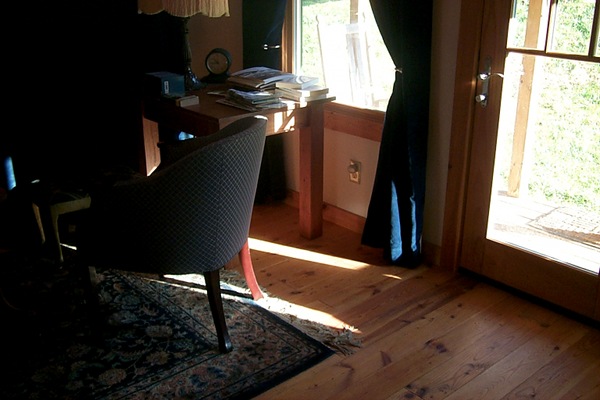
The eastern side of the living room

The downstairs bedroom, through the bay window

The lower stairs

The upper stairs. The spot of sunlight on the right is coming through the front dormer, which faces south and is not visible in this photo.

The upstairs bedroom. All the photos were taken about 8:30 a.m. on Nov. 11.


